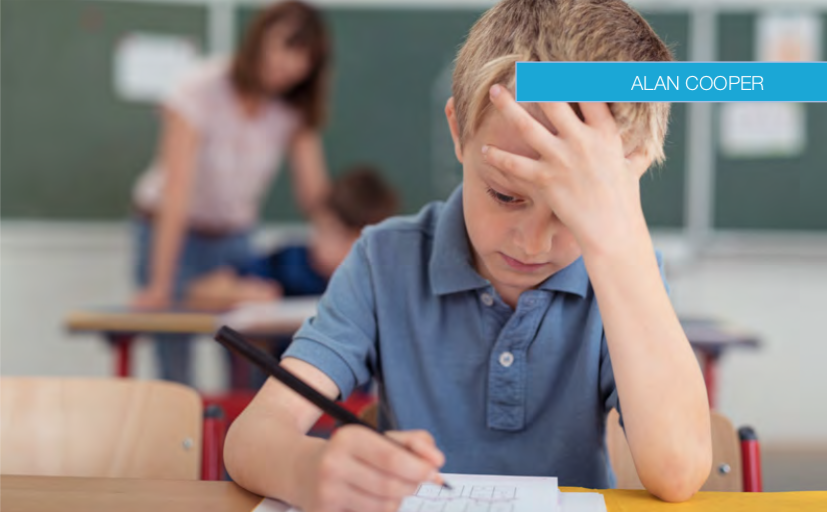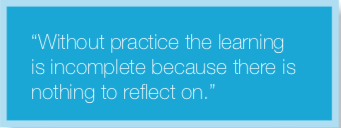Breathing Techniques to Bring Calm
“If you remain calm in the midst of great chaos, it is the guarantee that it will eventually subside.”
–Julie Andrews

Stress is endemic in the lives of our teachers, their students and parents. It can be trivial, nothing more than a worry or minor concern, but even these small worries can escalate into panic attacks. It can also be something that has developed from the trivial into serious mental health issues with a worst-case scenario of suicide. Therefore, there is a need to teach simple, matter-of-fact techniques to dispatch the trivial as soon as germination occurs. Become proactive!
Prevention can be achieved by working with a whole class and getting in place a herd mentality based on cognitive action that can be called upon to calm the herd and the individuals in it as required.
Breathing is ordinarily an involuntary act, but consciously selected breathing activities using the thinking brain, the neocortex, will overcome the involuntary systems of the emotional brain (the limbic system) which promotes the stress. By breathing slowly and deeply time and space is provided for the thinking brain to emerge (the neocortex) and provide cognitive activities that sometimes rapidly, sometimes needing a longer time period, reduces or even removes the fight, flee, or freeze automatic response to the perceived danger, imagined or real, that triggered the panic or stress reaction.
Practice fields must be found for this, first to learn the techniques, and then to practice simulated drills. Without practice the learning – the objective – is incomplete because there is nothing to reflect on. Choose one of the three activities described beneath, and only when satisfied with the level of mastery, teach another one.

Fortunately, the school day provides space for this: at roll call first thing in the morning which is often a dead time, after recess and lunch break, and the most obvious but seldom observed, when a teacher observes an in-the-moment teachable opportunity either responding to a real time activity like an earthquake or providing a contrived physical or mental activity to increase class alertness like making a loud noise.
If the teaching moment is likely to increase the stress for any individual whose behaviour drew attention to it make sure that that student or group of students is not identified or singled out in any way or their stress may well be increased. Mentoring those involved as a subgroup of the class, or on a one to one basis will avoid this. In all this the teacher’s actions and words will be passing on coded messages. Be aware of this.
Deep Back Breathing. The starting point is the teacher giving a clear statement as to the purpose of doing this: It is to calm. Lying down, visualise your back expanding as you breathe in slowly and deeply. Inhale through your nose and then exhale equally slowly through your mouth. Now, take a slow deep breath a second time, and again exhale slowly. Inhale slowly and deeply a third time while you focus on your back expanding. Take a moment to fully appreciate what your upper body feels like when it is full of air.
Some form of reflection needs to follow, probably in pairs because the total time needed will then only be brief, and class time is important. These reflections should focus on something specific like expanding the vocabulary about breathing and stress. Having group charts on the wall for vocabulary to be added after each session makes the new vocabulary available to all. A wide vocabulary allows for better thinking and problem solving and so deep learning is enhanced.
Once the activity is understood move on to practice field two. Again, lie on the floor stretched out. Place a book on the abdomen to watch the book rise and fall as the person inhales and exhales. Time them for a minute, or later, as the routine becomes normal let them time themselves. During the minute, have them carefully count the number of times the book rises and falls. Be a little skeptical of early results. False tallies may be given, as some may be trying to double guess and falsely “recall” what they think is the right answer or near the right answer.
As trust develops, have the students reflect on any differences in the breathing. If they are keeping a graph of their results for each session, variation will appear. Can they explain these? Is there a difference between first thing in the morning and later in the day as you tell them they are about to have a spelling or a maths test?
Further, have a medical professional teach the students to take their own pulses and record these from time to time and reflect on the differences.
Belly Breathing is another form of cognitive activity that reduces stress and tension. This can be done standing, sitting, as well as lying down, so it may fit some classroom architecture or class personnel better than back breathing. The extra curricula, non-breathing activities are the same as for Back Breathing. Proceed to have the students put their hand on their bellies. Then ask them to fill their lungs with the same deep breath through their noses as for Back Breathing. While doing this, have them feel their bellies expand much as a balloon does as it is blown up. The metaphor will help understand the elasticity of the belly muscles.
Allowing for reflection to develop allows understanding of how breathing can reduce stress and gives these exercises personal meaning. Ask how the body felt before breaths were taken and after the breaths. What changes occurred?
Butterfly Breathing is more advanced than the previous two in that it includes wider action and therefore, more concentration than the previous two but also has a connection
to both mindfulness and yoga.
Set the scene. “Pretend you are a butterfly developing its wings as it learns to stretch and strengthen them as it emerges from its cocoon.”
Then detail wing action:
• Fingers interlaced, with knuckle side up, touching the bottom of the chin.
• Elbows out at right angles (sideways).
• Breathe in slowly and lift arms sideways and up.
• What did you feel your body do?
• Breathe out slowly bringing the arms/elbows to your side.
• What did you feel your body do?
The most important action is for the butterfly to breathe deeply. This can be assisted by getting the students to count, very slowly, 1, 2, 3 as the wings are opened, and 2, 3, 1 as they close. As the wings close and the breath is discarded, imagine the worries fleeing the body.
Have the students time themselves from the classroom clock as they increasingly take deeper breaths over time. Such low- level competition is motivational even when the competition is with self. Shift to selected pairs for more motivation. Over time measure the chest to ascertain if the chest is expanding after the last breath is taken. An alternative is to measure the size of the chest weekly as the deep breaths get larger and use science to verify the improvement in the breathing.
Deep Learning will be a major, wider objective here. Breathing techniques are being established to prevent stress 24/7. That is everywhere, even perhaps in bed at night waiting for sleep to come and worried about tomorrow’s test. Reflection comes in here, at a simple level. Which method is the best to choose when sleep awaits?
